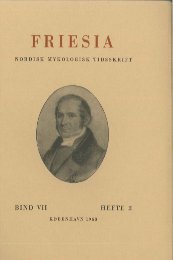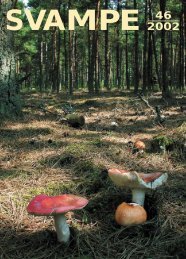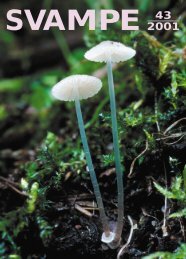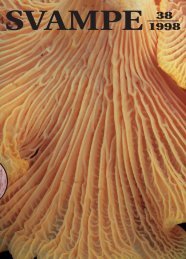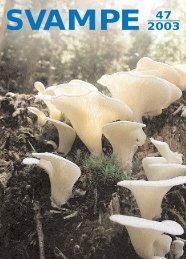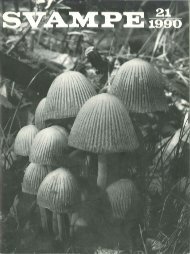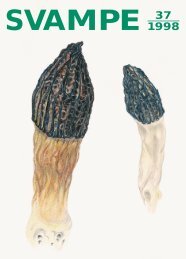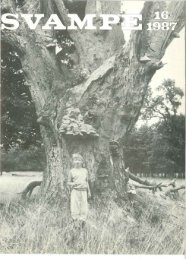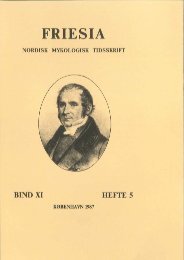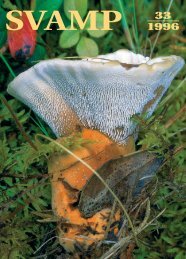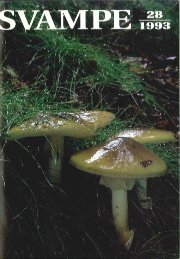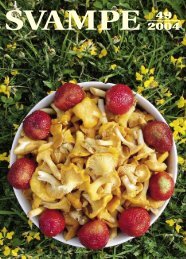Friesia X, 4-5
Friesia X, 4-5
Friesia X, 4-5
You also want an ePaper? Increase the reach of your titles
YUMPU automatically turns print PDFs into web optimized ePapers that Google loves.
- 257 -<br />
included for Septoria passerinii SACC., this having been considered the<br />
Septoria species most commonly attacking barley. Table 1 shows that<br />
the pycnospores fall within the limits of L. nodorum, but are quite<br />
distinct from those of S. passerinii. The ascospores also appear to<br />
resemble those reported for L. nodorum on wheat.<br />
Five isolates from barley leaves and five from wheat lea ves were<br />
used for comparative observations of growth behaviour in culture.<br />
The isolates were grown on a number of different media including<br />
potato dextrose agar, oat meal agar, pea agar, malt extract agar and<br />
lima bean agar. No significant differences in growth between isolates<br />
from barley and wheat occurred on these media. Oat meal agar, pea<br />
agar and potato dextrose agar proved to be the best media whereas<br />
the growth on malt extract agar and lima bean agar was less vigorous.<br />
On the first three of the media the colonies developed into white<br />
masses of mycelium making a white, thick, vigorous mat which on<br />
potato dextrose agar later turned dark olivaceous green. On oat meal<br />
agar and pea agar there was less tendency to form dark coloured<br />
pigments, and the fungus retained a light or slight pink colour.<br />
As aresult of these comparative studies it is concluded that the<br />
species on a morphological basis is L. nodorum.<br />
PATHOGENECITY ON BARLEY<br />
Infection experiments were conducted with three kinds of inoculum.<br />
1) Pycnospores obtained from pycnidia on naturally infected<br />
barley leaves. The spores were suspended in water supplemented with<br />
0,1 % of gelatine. 2) Mycelial cultures obtained from diseased barley<br />
leaves. Inoculum was prepared by macerating cultures on PDA in<br />
water supplemented with 0,1 % of gelatine. 3) Mycelial cultures originating<br />
from ascospores isolated from perithecia on barley leaves.<br />
Inoculum was prepared as deseribed under 2.<br />
The three kinds of inoculum were sprayed onto 14 days old barley<br />
plants with an atomizer. Following inoculation the plants were placed<br />
in plastic bags for 2 days and then transferred to normal greenhouse<br />
conditions with temperatures at approximately 18-26 ° C. In the course<br />
of 8 days after inoculation the plants developed disease symptoms<br />
identical for the three kinds of inoculum. The fungus was reisolated<br />
from the infected leaves and when these were placed in a moist<br />
chamber typical pycnidia of L. nodorum developed in the lesions.<br />
FRIESIA X 17



